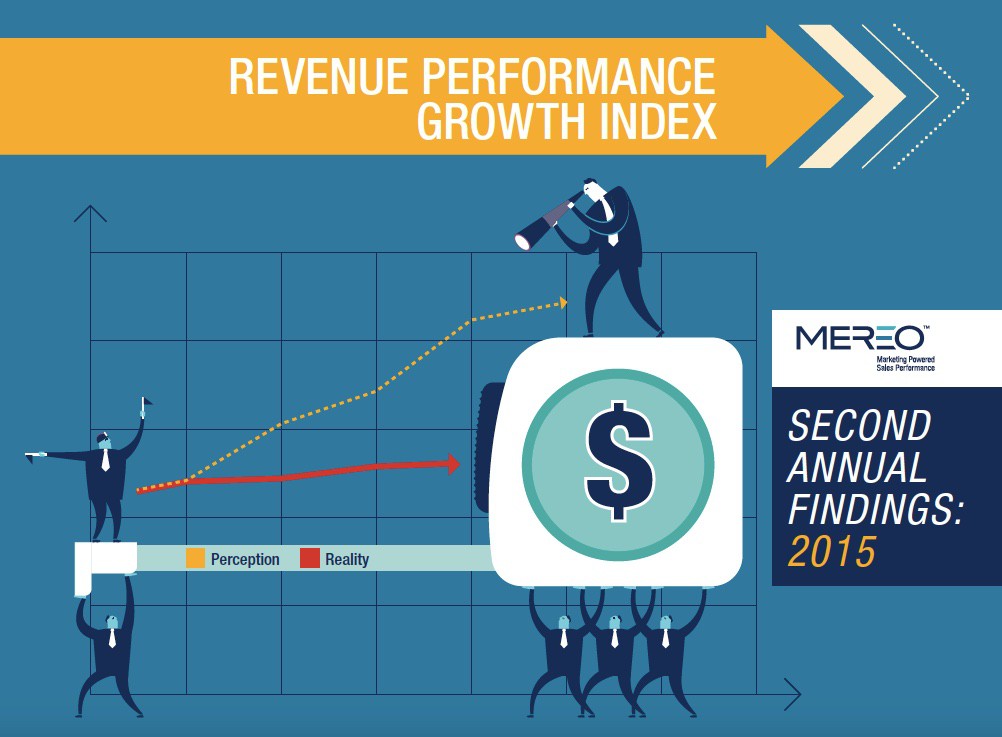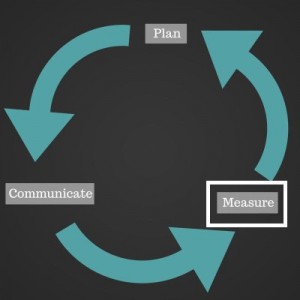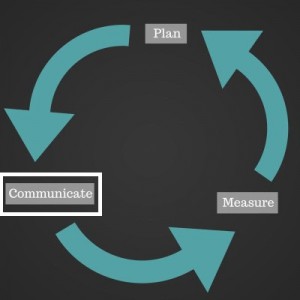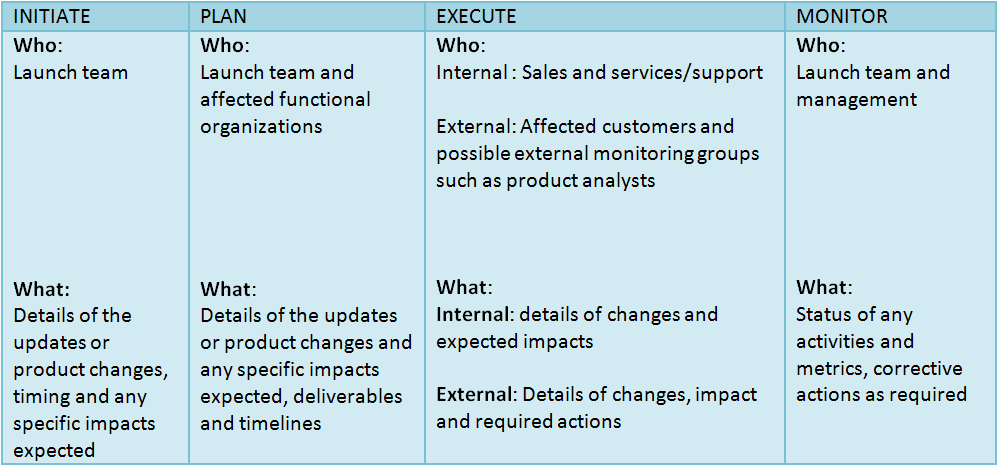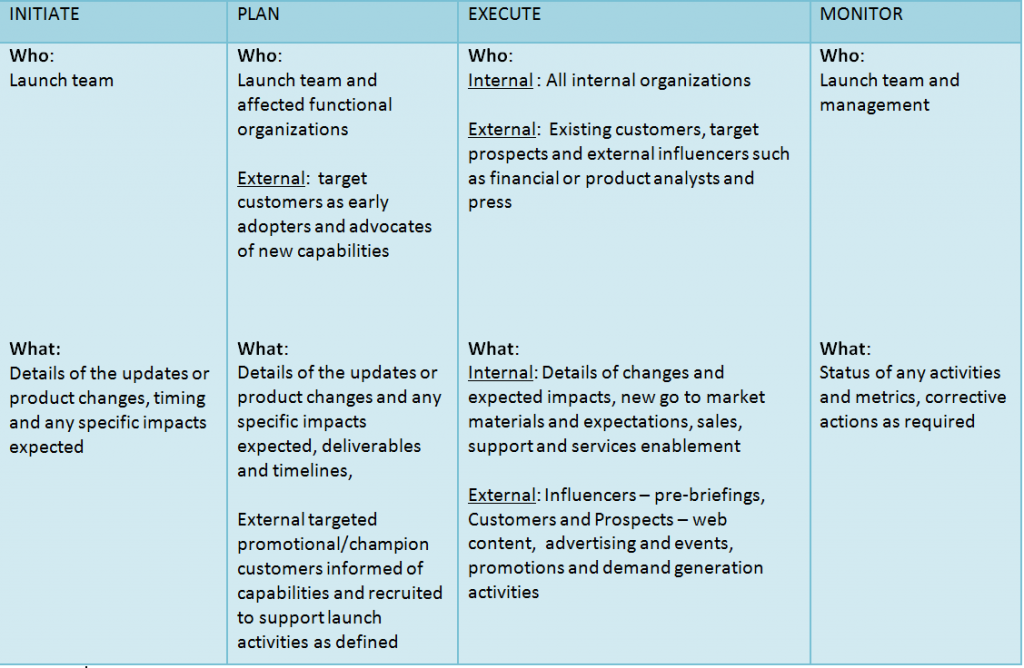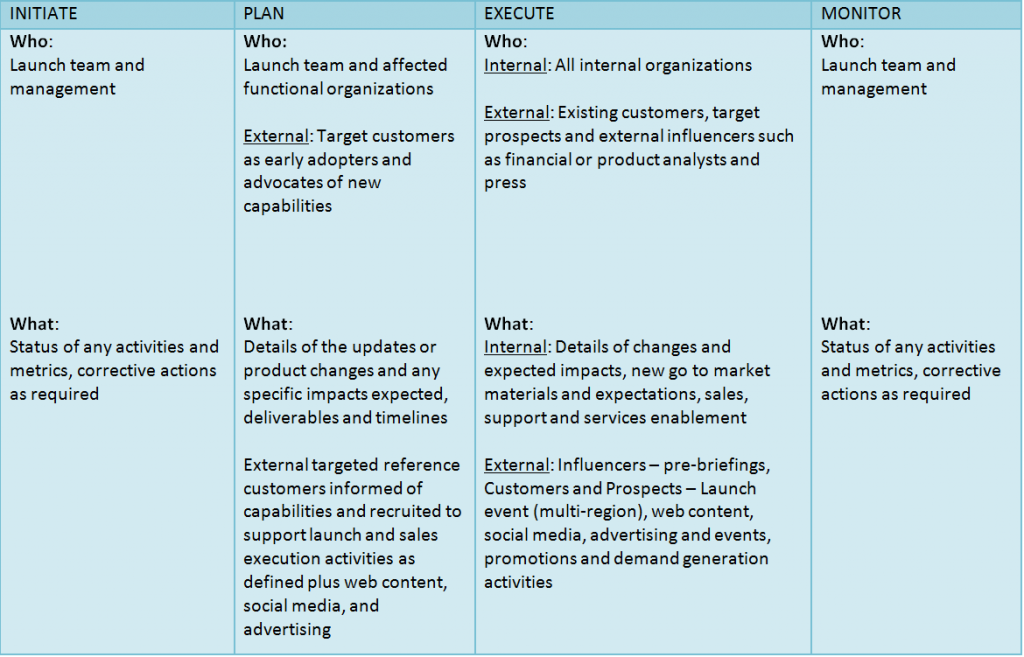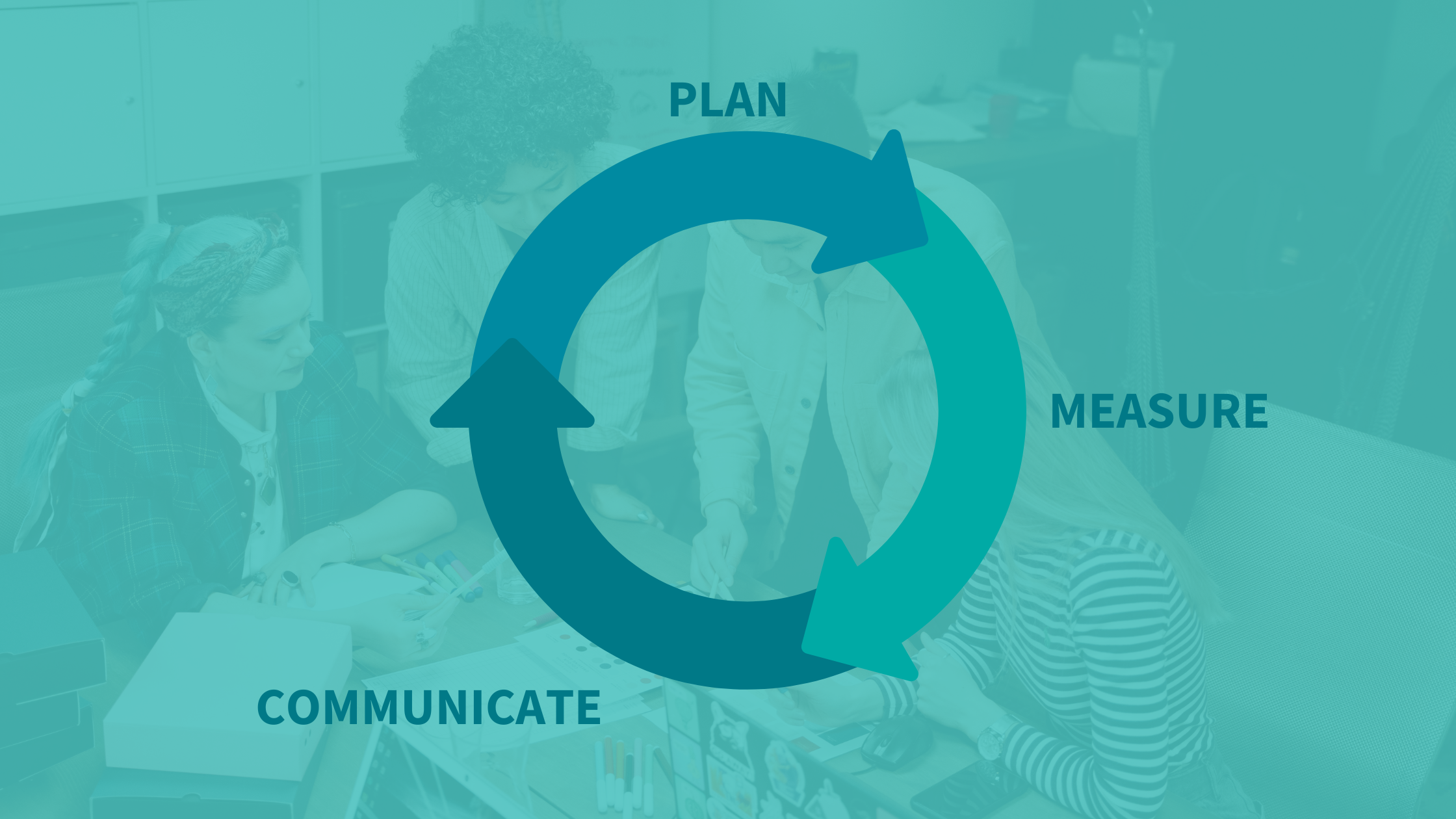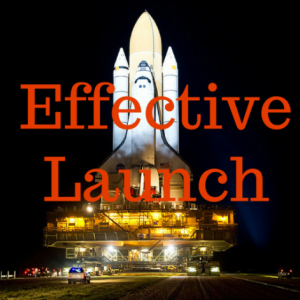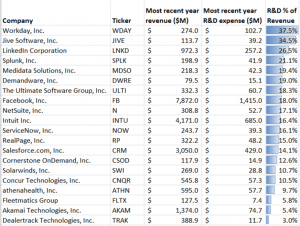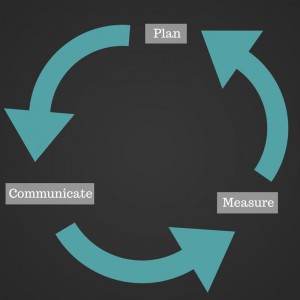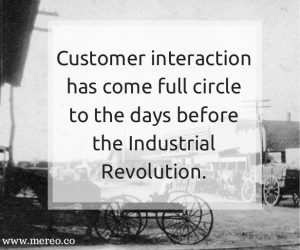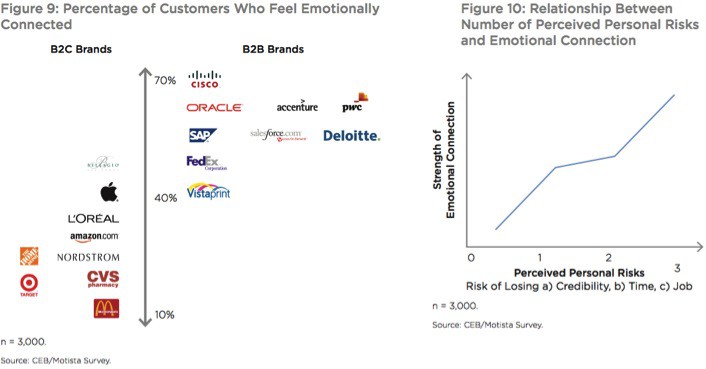Mereo recently completed its fourth annual revenue performance study of Fortune 500, Global 500 and Russell 2000 companies for the 2016 and 2017 fiscal years.
Once again, we have uncovered similar trends to previous studies — which has been consistent since the recessionary period of 2007 and 2008 — and we continue to be surprised by the underperformance of most companies’ revenue line.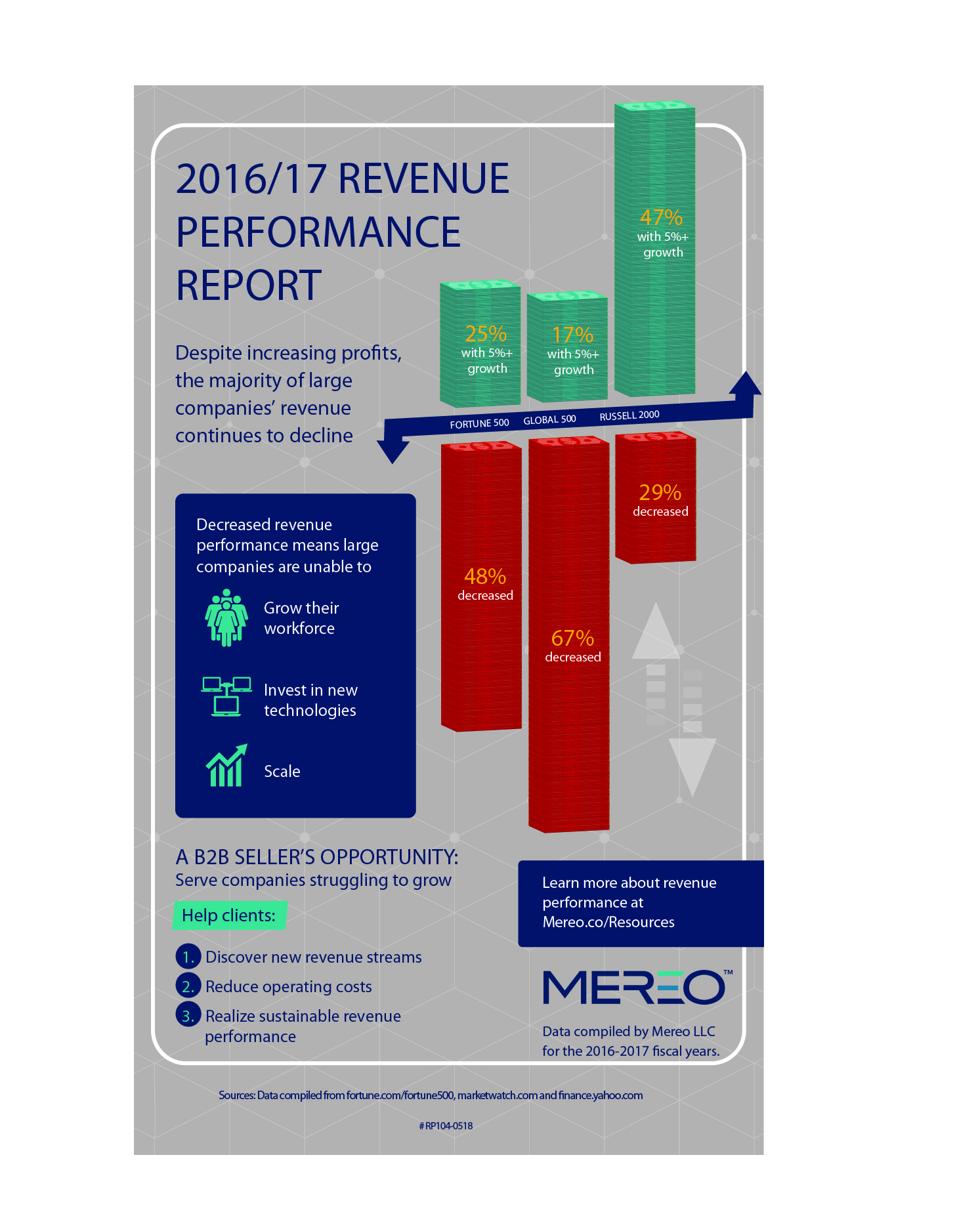 While there was some improvement as compared to last year, a relatively small percentage of companies can claim strong annual revenue performance. For instance, nearly 48% of Fortune 500 companies saw their revenue actually shrink last year (compared with 51% the year before) and nearly 67% of Global 500 companies reported declining revenue (as compared with 73% the year before). The somewhat brighter area was in mid-size companies, where a comparatively small 29% (still nearly 1 out of 3) of companies shrank this past year.
While there was some improvement as compared to last year, a relatively small percentage of companies can claim strong annual revenue performance. For instance, nearly 48% of Fortune 500 companies saw their revenue actually shrink last year (compared with 51% the year before) and nearly 67% of Global 500 companies reported declining revenue (as compared with 73% the year before). The somewhat brighter area was in mid-size companies, where a comparatively small 29% (still nearly 1 out of 3) of companies shrank this past year.
If we generously define strong growth as over 5% revenue growth, we found that only 17% of the Global 500 companies, 25% of Fortune 500 companies and 47% of mid-size companies met this hurdle in the past year.
So for the fourth year in a row, mid-size companies outperformed their larger counterparts and the Global 500 performed the worst.
What does this mean for B2B sellers?
A positive way companies can react to poor revenue performance is to continue to focus on driving down costs and improving productivity. By doing so they can continue to improve profitability as confirmed by the most recent quarterly earnings reports.
In this environment, sellers must focus their primary value statements around productivity and cost-reduction to resonate with their buyers. In addition, a seller can clearly show that they can help enable new revenue streams, as opposed to improving existing streams. They can also more easily engage the prospect around revenue growth benefits as well, since new streams of revenue are more easily quantified than increases in existing streams. If a seller has a solution that both reduces the costs and enables new revenue streams, they are in an excellent position in today’s market.
Initiating conversations with prospective buyers in terms of their current revenue and profitability environment, versus simply presenting your set of tools, will start to differentiate you from the competition in terms of how you sell in addition to what you sell. Demonstrating a knowledge of the current corporate environment and an empathy for the focus on cost, and helping the prospect uncover new potential revenue streams for their business, will position you as a valued partner focused on solving their problems versus a sales representative focused on your quota achievement.
While this data may seem dire, it does not have to be. Understanding the needs of buyers and seeking to serve them, right where they are, will set you apart in these interesting financial times. At Mereo, we thrive on equipping teams to provide value to their industry and serve their buyers. For guidance on how to have these conversations, contact us or give us a call at 512.400.0460.
Download our free eBook for tips on how to seek to serve your buyers today.



